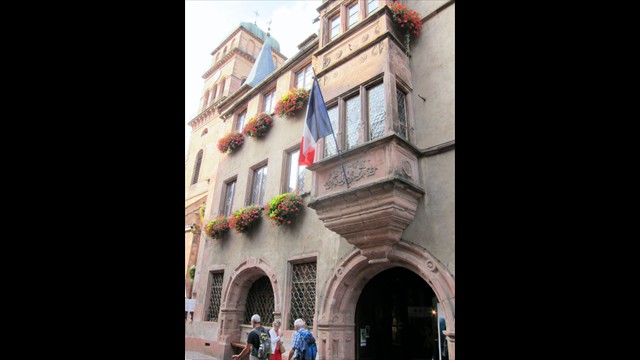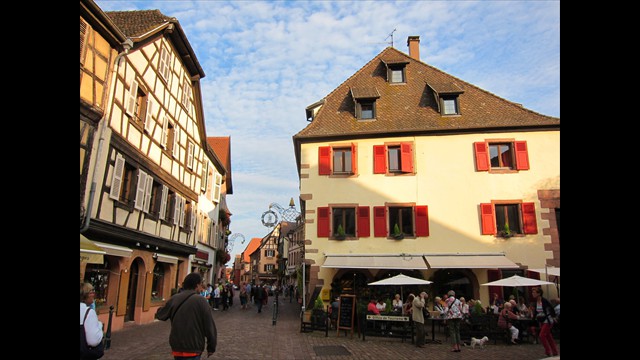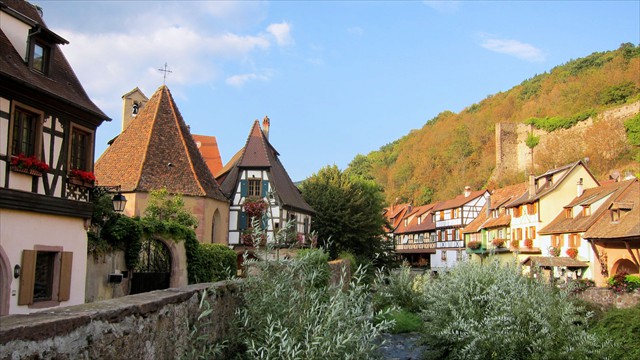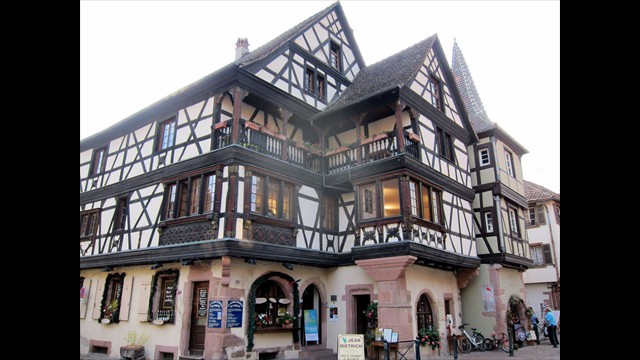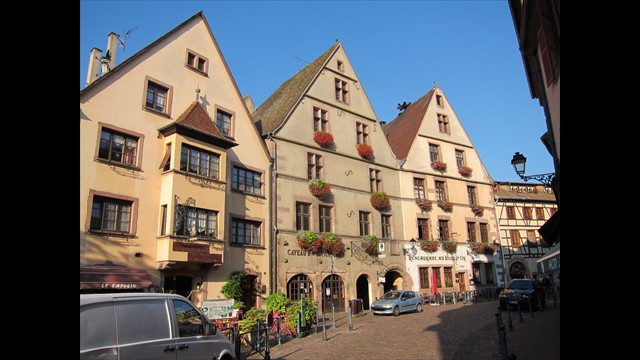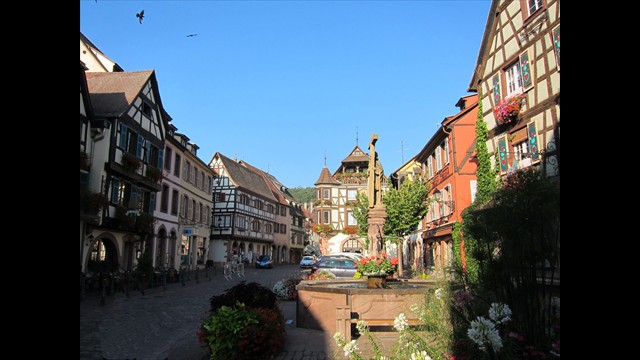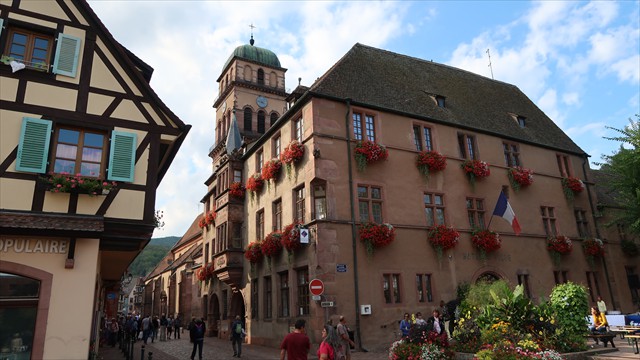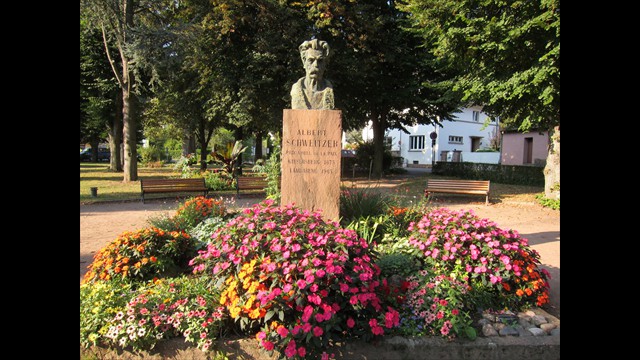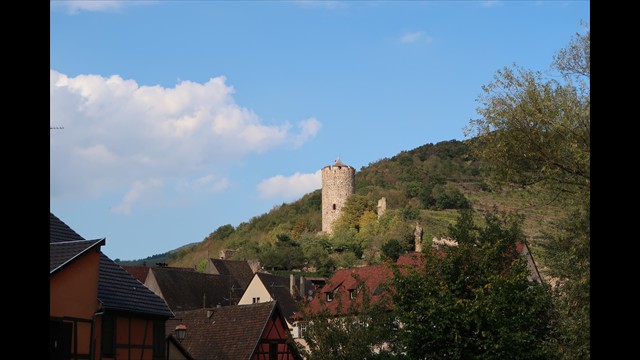Kaysersberg is located on an ancient Roman road that connects the plain of Alsace with the Lorraine side of the Vosges Mountains. The name derives from the imperial castle on
the mountain that rises just on the outskirts of the town. The ruins are the remains of a once considerable castle complex. It was built at the beginning of the 13th century by the
Hohenstaufen king Henry VII. In 1354 Kaysersberg joined the Alsatian League of Ten Towns. The town forms a picturesque townscape.
Albert Schweitzer was born in Kaysersberg in 1875, died in Lambarene in 1965.
Johann Geiler of Kaysersberg (born in Schaffhausen in 1445 as the son of a notary), the famous preacher at Strasbourg Cathedral, grew up here in the house of his grandparents. Johann Geiler of Kaysersberg was himself a pilgrim, and as a theologian he preached and wrote repeatedly on the subject of pilgrimage in a popular way. In 1512, his sermon cycle "Christenlich Bilgerschafft zum Ewigen Vatterland" was published. In 25 sermons, the author presents the Christian life as a pilgrimage and describes the travel preparations and the "luggage" of the Christian pilgrim. The individual travel requirements are interpreted allegorically: the pilgrim's bag corresponds to faith, the pilgrim's staff to hope, the pilgrim's hat to patience, and the pilgrim's shoes to virtues.
Kaysersberg has a long pilgrimage tradition. There was a pilgrim's hospice inside and outside the town. In the south transept of the 3-nave Holy Cross Church from the 12th century (choir and side aisles 15th century), we find a (rare) pilgrim crowning (1477/78): St. James puts the crown on pilgrims. In the predella of the 3-wing carved altar from 1518 with the Passion story, St. James is depicted. The late Romanesque west portal shows a crowning of Mary. The Holy Sepulchre (stone carving, 16th century), Crucifixion and choir stalls are also worth seeing. Next to the church is the Chapel of St. Michael with the ossuary crypt, where above the entrance is written, "So it is: there lies the master with the servant." On the hillside: late Gothic St. Wolfgang's Chapel, which belonged to the former leprosarium.
In the cemetery behind the church is the oldest pilgrim's cross in Alsace, dating from 1511.

The Holy Cross Church in Kaysersberg has Romanesque roots. More about it on the page:
Impressions from Kaysersberg
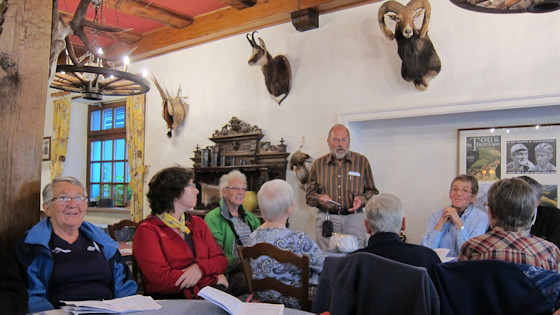
Our pilgrimage leader Erhard
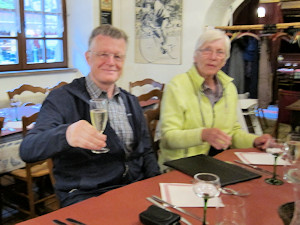
It was nice - cheers!


